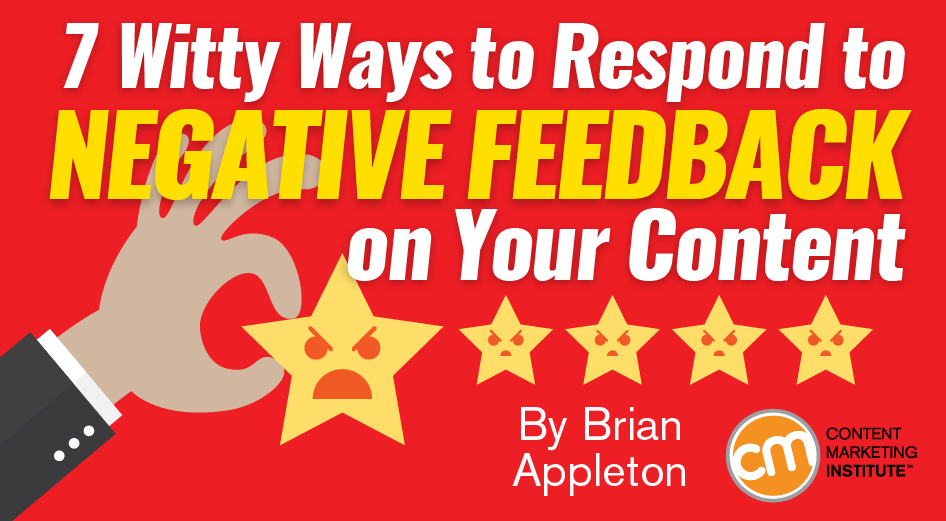Author: Brian Appleton / Source: Content Marketing Institute

Seven years ago, as a naive content marketer with more enthusiasm on my resume than actual experience, something transpired that bugged me for years. I was working as a freelance blogger, paying my way through college. A typical morning involved writing, publishing, and scheduling social media content and blog posts for clients. My weekend had been relaxing and my Monday morning coffee was just about perfect.
Then it happened. Someone said they hated my blog post. What was even worse? They said I couldn’t write worth a lick.
I was stunned. Shocked. Discouraged.
It surprised me so much that I couldn’t even formulate a response.
Today I wouldn’t think of ignoring negative feedback. Responding to negative feedback is one of the best ways to showcase your brand’s personality. All you need is a little creativity, honesty, and a solid grasp of the facts. It’s known as wit – the ability to think quickly, often associated with humor.
Here are seven tips I use when responding to negative feedback that enable me to strengthen the audience relationship and show off the brand’s fun, professional personality.
1. Play it cool
Every time I read a negative comment, bad review, or insulting remark I take a long, deep breath and read it again.
The temptation is to reply immediately to counter all the horrible things being publicly posted. Responding in the heat of the moment always makes things worse.
Take the time to consider your reply and don’t jump to conclusions. First, consider the context of the complaint and then formulate a response.
If you’re good at humorous writing (or have a co-worker who is) use that to your advantage. Responding with authentic humor is one of the best ways to defuse a tense situation. In the same way that a smile relieves tension in face-to-face encounters, tasteful humor can turn a bad situation into a great one.
That’s exactly what Sainsbury’s did when it turned a customer’s clever but frustrated tweet into a viral brand win.

2. Understand your responsibility
It’s easy to think your first responsibility in responding is damage control that appeases the commenter. While you absolutely need to resolve the situation, your first responsibility is to your audience and your brand.
Let me clarify. Your target audience only includes people with the potential to turn into paying customers and brand advocates. In other words, focus on people who could become qualified sales leads.
If the commenter isn’t part of your target market, don’t go overboard to appease him or her. Instead, address the issue and showcase your brand’s personality.
Everlane registered a win after sharing a classy but funny response to a brutal customer complaint on Instagram.

3. Generic doesn’t cut it
Never reply with a general statement. That’s a recipe for frustration. Your response needs to be customized to address the concern.
You can always tell when someone is using…
Peter Bordes Jr
Founder & Managing Partner Trajectory Ventures. Lifetime entrepreneur, CEO, Board Member, mentor, advisor and investor.
Obsessed with the infinite realm of possibility in disruptive innovation driving global digital transformation in technology, cloud-based infrastructure, artificial intelligence, data, DevOps, fintech, robotics, aerospace, blockchain and digital media and advertising.

